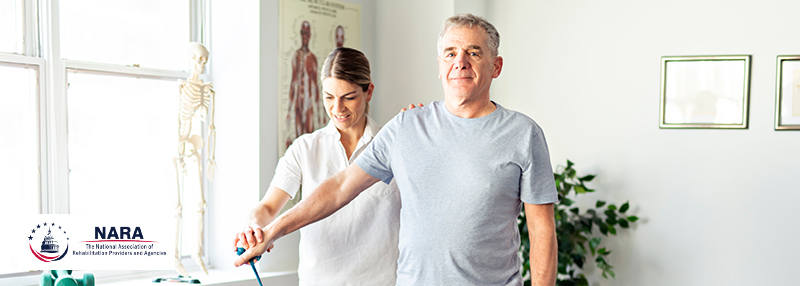Posted On: January 22, 2025 by NARA in: Home Health Self care Tips

As you begin your rehabilitation journey, it's essential to create a safe and supportive environment that fosters progress and independence. Your home can play a crucial role in your rehabilitation, providing a comfortable and familiar space to practice exercises, recover, and adapt to new challenges.
Let’s take a look at simple modifications to make your home more rehabilitation-friendly, essential tools and equipment for home-based rehabilitation exercises, and provide tips for creating a conducive environment for optimal recovery.
Simple Modifications for a Rehabilitation-Friendly Home
Clear Clutter and Obstacles
Remove any tripping hazards, such as rugs, electrical cords, or furniture, to create a clear path for safe mobility.
Improve Lighting
Ensure adequate lighting in all areas, especially in hallways and stairways, to reduce the risk of falls.
Install Handrails and Grab Bars
Install handrails in hallways and grab bars in bathrooms and bedrooms to provide support and balance.
Widen Doorways and Hallways
Widen doorways and hallways to accommodate walkers, wheelchairs, or other mobility aids.
Rearrange Furniture
Rearrange furniture to create a comfortable and accessible space for exercises and daily activities.
Essential Tools and Equipment for Home-Based Rehabilitation Exercises
Exercise Mats and Cushions
Invest in exercise mats and cushions to provide comfort and support during floor-based exercises.
Resistance Bands and Weights
Use resistance bands and weights to strengthen muscles and improve mobility.
Balance and Coordination Tools
Utilize balance and coordination tools, such as BOSU balls or balance boards, to improve balance and stability.
Assistive Devices
Use assistive devices, such as canes, walkers, or wheelchairs, to aid in mobility and independence.
Therapeutic Equipment
Incorporate therapeutic equipment, such as parallel bars or a stationary bike, to target specific muscle groups and improve cardiovascular health.
Tips for Creating a Conducive Environment for Optimal Recovery
Create a Dedicated Exercise Space
Designate a specific area for exercises and rehabilitation activities to maintain focus and motivation.
Minimize Distractions
Eliminate distractions, such as TVs or electronic devices, during exercise sessions to promote concentration and engagement.
Incorporate Mirrors
Use mirrors to provide visual feedback and improve form and technique during exercises.
Invest in Comfortable Seating
Provide comfortable seating options, such as a recliner or orthopedic chair, to promote relaxation and reduce fatigue.
Maintain a Consistent Schedule
Establish a consistent exercise schedule to maintain motivation and track progress.
Take the First Steps for Safe and Effective Rehabilitation in Your Home
By making simple modifications to your home and incorporating essential tools and equipment, you can create a safe and supportive environment that fosters optimal recovery and rehabilitation. Remember to prioritize your comfort, safety, and independence, and don't hesitate to seek guidance from healthcare professionals or rehabilitation experts!
Note: Before adding or using any equipment at home or engaging in any exercises, please consult your healthcare provider to ensure they are safe and appropriate for your specific needs.

0 comments